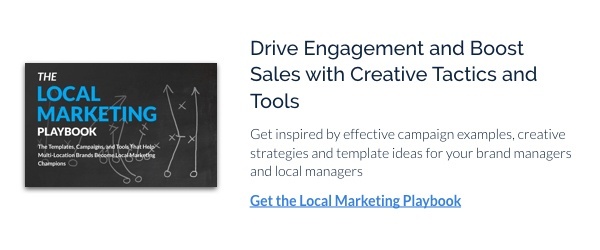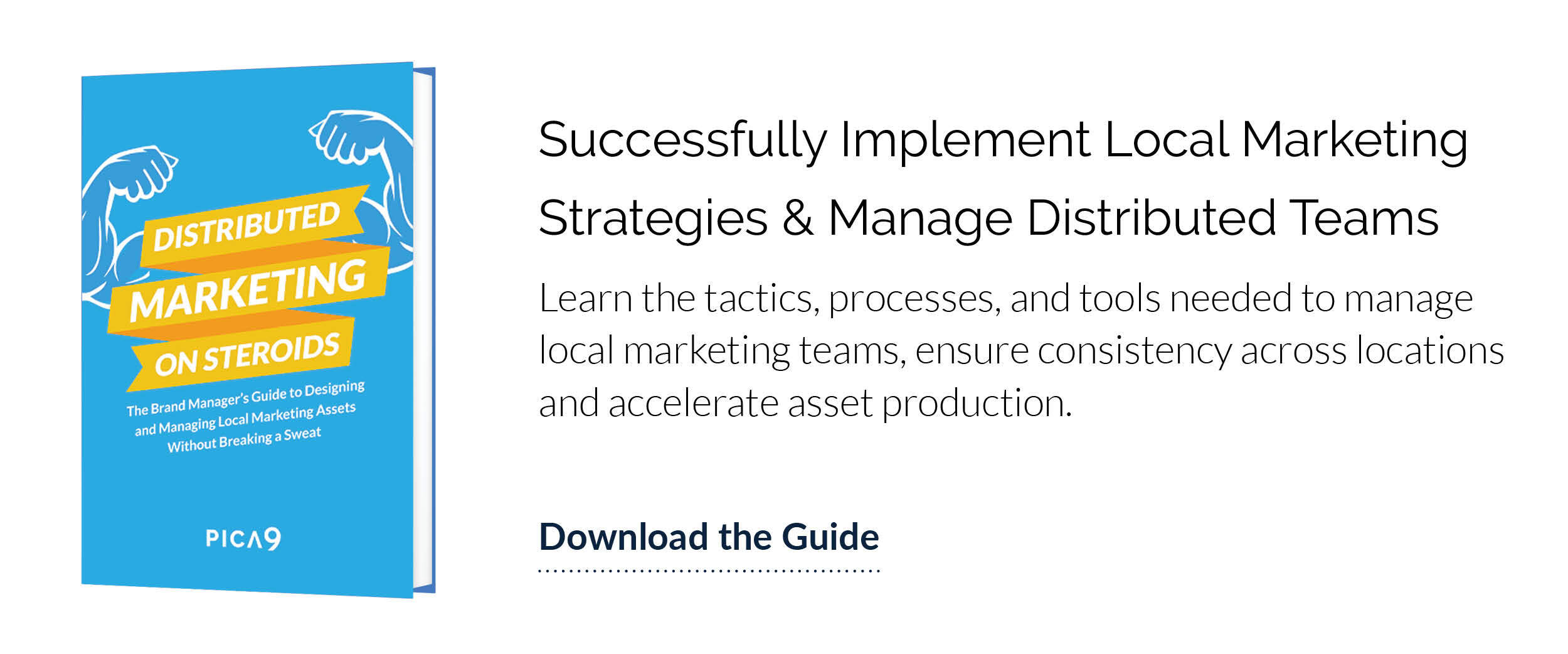Why does brand consistency matter?
The most successful multi-located brands know that brand consistency means everything. In fact, recent reports indicate that well-managed and consistent brands may be worth up to 20% more than competitors. In most cases, consistency is the foundation of brand equity or customer's perception of your brand.
Unfortunately, brand equity isn't built overnight. For the vast majority of distributed businesses and organization, brand equity is built very, very slowly. The fact is, your customer's perception of your brand improves over time as they continue to have positive experiences and encounters with your organization.
For these reasons, building and retaining brand consistency should be at the top of every distributed brand manager's mind. So, what does your business need to do to achieve greater brand consistency?
Brand Consistency Checklist for Multi-Location Brands
As an industry leader in brand management, we've seen what works and what doesn't work when it comes to building a more consistent brand. Follow this checklist to deliver more consistency across your distributed network:
1. Develop Your Brand Guidelines
Your brand needs creative guidelines that outline how certain logos, colors, and fonts should be executed in different forms across the local and national level. Your brand standards and guidelines should capture two key elements:
-
Treatment of the brand's visual identity (logo use, colors, fonts)
-
Treatment of the brand's message (voice, tone, and writing style)
Are your local marketers using social media? Are they required to wear uniforms? Every aspect of the customer experience should be documented in the brand guidelines. This document should be readily accessible and updated frequently.
2. Inventory and Organize Your Brand Assets
Access to color swatches, logos, prior campaigns, photography assets, and templates are key for both head office and local marketing partners. Brand managers need to understand the different marketing assets and branding elements their organization has, and categorize them.
Clearly identify which assets are for head office, which are for local teams, and which should be accessible to both. One way to make the most pertinent assets easily accessible is to look at the frequency of use. Highly used assets should be easy to find and grouped together. Ensure your brand has a clear system in place for organizing assets, specifying who should have access to assets and clearly make regularly used assets readily available and easy to find.
For example, your in-house graphic designers need access to this inventory in order to be as efficient as possible, and reuse existing assets whenever possible. For many distributed brands, with large numbers of digital assets, this can be best achieved with tools for digital asset management.
3. Make Local Marketing Customization Easy
Next, make it easy for local marketers to find and use brand assets for their individual needs. For many distributed brands, this is achieved with the adoption of a local marketing automation tool. In most cases, these tools automate the distribution of assets by region and location.
These tools enable marketers to restrict access to brand creative that local marketers shouldn't be able to use or manipulate. Additionally, a local marketing automation solution grants access to the "right" things such as campaigns, assets, and projects.
4. Collect Feedback From the Field
Your brand marketing team should check in regularly with local marketers to see how they’re using your brand assets. Regional marketing managers who gather feedback from local marketers are a great resource to work with and understand what makes your local marketers tick. Note their successes and their frustrations, and apply this feedback to the way you design future campaigns.
Your local marketer's insights can help you solidify your brand promise and evolve your messaging to meet customer expectations. Their local knowledge can help you identify when the brand promise isn't resonating with a particular set of customers, or when campaigns fall flat. Use their on-the-ground experience to help you learn more about what is and isn't working.
5. Support Local Users
Create a local marketing hall of fame which encourages your franchisees, dealerships, and representatives to use your templates and technology in brilliant ways. Promote the best examples of compliant, creative local marketing execution to encourage other affiliates to deliver on the brand promise.
Consistent Brands Are Successful Brands
Brand managers who truly understand their brand mission and build out processes that support local execution help their brands build equity. If your local stores have compliant, beautifully-designed signage and consistent quality, your customers will never be unpleasantly surprised or confused by your marketing.
Consistency and quality at the local level should be a guiding light for how you design and run your local marketing campaigns. When it’s easy for your local marketers to succeed with templated marketing assets, and you’ve created a two-way information flow between the field and home office, your metrics, revenue, and growth will likely all move in a positive direction.
To learn more about how the world's most effective brand managers achieve consistency on a local level, read our free eBook:






